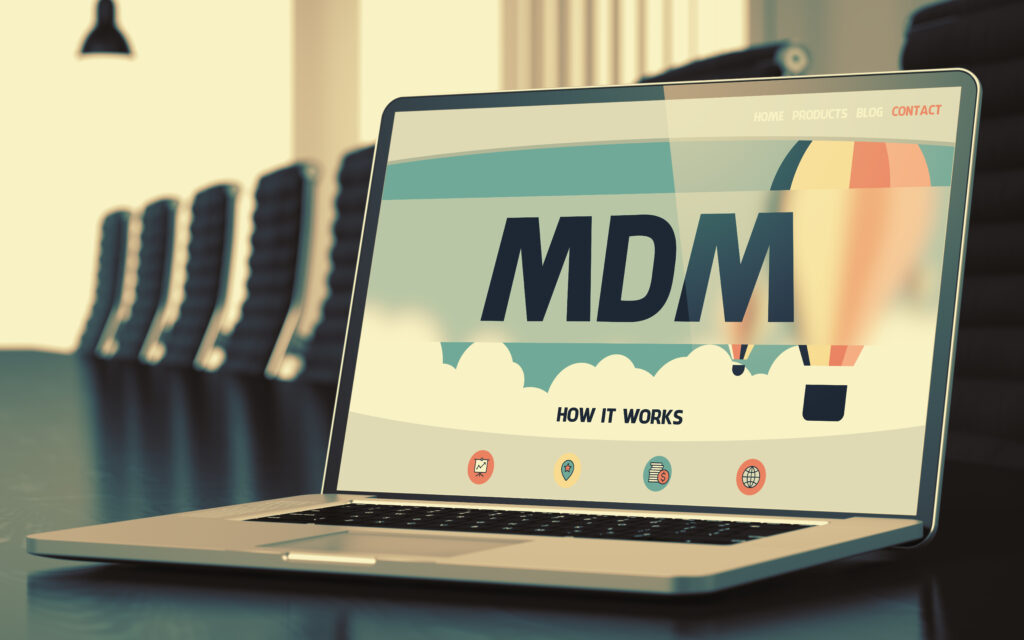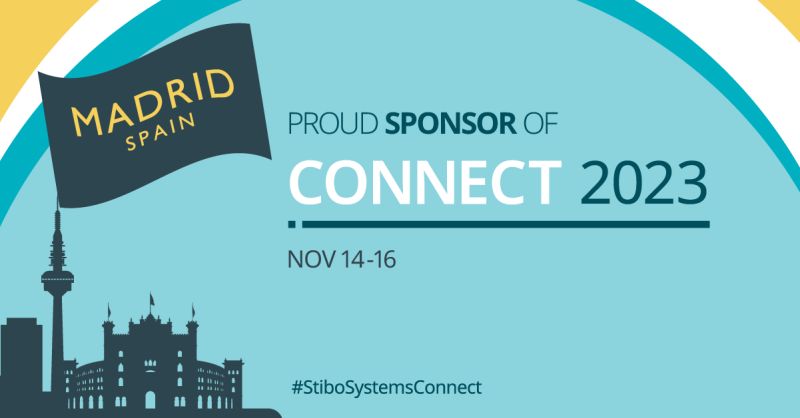
So you want to improve the way you manage data in your organisation and you have come to the conclusion that Master Data Management (MDM) is the way to get there.
But how do you get started with MDM?
The decision to go for MDM is strategic, reaches many years out in the future and cannot be done half-heartedly. The road to a successful MDM implementation does have many pitfalls, so you must carefully plan your journey before you embark.
This may seem overwhelming when you are at the starting point and that's we have created a series of videos designed to help you in this exact situation.
Bad data is bad for business.
One of the deciding factors often for selecting a Master Data Management (MDM) system is that business decisions are being made on bad data. However, business leaders are often oblivious to how poor quality data undermines their company’s performance.
Basically if your current data status-quo isn’t that good, you’re not going to get the results you want from applying a new MDM tool unless you tackle this issue head first. Underestimating the current status of data quality, consistency and completeness is one of the biggest risk factors when starting an MDM journey.
The list of benefits of MDM is long, but only if it rests upon a solid data foundation and organisations must have a realistic view of what it takes to achieve this and not expect it to magically appear as a side-effect of the MDM implementation. It requires proper focus and resource allocation made in proportion to the current state of data.
Check out our video series on How To Get Started on Your MDM Journey.

What is Master Data Management (MDM)?
An MDM solution helps an organisation to manage its most critical data assets (known as master data) as a single source of truth across an entire enterprise.
Investing in an MDM system should be regarded as building a foundation on which many other business initiatives will rely upon in the future, with more informed decisions made based on trustworthy data.
How do you know if you are ready for MDM?
What are the current data management practices within the organisation? Are there data silos, quality issues, or inconsistencies that need to be addressed? An MDM solution isn’t going to magically address points of friction. The better prepared you are as a business for the MDM journey, the higher chance you have of accomplishing a successful outcome.
Are there for example specific business objectives that an MDM solution can address? Do you have senior executives committed to the MDM initiative, along with available resources and budget? And is there a Data Governance framework in place? Are there data accuracy or consistency problems that need to be resolved?
Preparing properly for a full-blown MDM project can significantly increase the chances of a successful project that sticks to timeline, stays within budget and delivers the expected value for the organisation.
Check out Video 2 in our video series How To Get Started on Your MDM Journey.
Getting everybody on the same page.
The success of your MDM initiative hinges on securing commitment and endorsement across every facet of your organisation. And to get this stakeholder buy-in, you’ll need to be able to demonstrate the ROI by estimating cost savings, revenue growth, or other financial gains that can be achieved through improved data management.
To sell the idea of investing in an MDM solution, a top-down approach is paramount to gain traction. Articulating clear commercial benefits that will help improve decision-making, collaboration and meet regulatory compliance, all endorsed by senior management.
And to generate the momentum you’ll need to start by identifying the organisation's existing data-related challenges and show how an MDM solution can streamline operations and increase efficiency.
There will always be concerns and potential objections, such as cost, implementation timelines, or disruption to the current processes that can be addressed by emphasising the long-term benefits of MDM.
Check out Video 3 in our video series How To Get Started on Your MDM Journey.

Evaluating current data practices
So, to check that your business is ready to take the next step you’ll need to carry out a thorough Data Quality assessment.
An assessment should help you evaluate the current state of your data, pinpoint data quality issues, and establish a clear understanding of the specific data quality requirements that should guide the selection of an appropriate MDM system.
To begin, you’ll need to set out what the data quality dimensions are most relevant to your organisation. These dimensions often include aspects such as data accuracy, completeness, consistency, timeliness, and reliability. Identifying these dimensions sets the stage for a structured assessment process.
At the same time it is important to have an understanding of how data is currently managed within your organisation. Identifying pain points such as data silos, and other data quality issues from the outset that can be addressed before you get started.
As the saying goes, “rubbish in rubbish out”. So, existing data sources within an organisation need to be listed and assessed. Determining the various types of data your solution will need to handle e.g., product data, customer data, supplier data and identifying any missing data that’s required.
Check out Video 4 in our video series How To Get Started on Your MDM Journey.
Setting the scene. Define your MDM requirements.
Begin by setting well-defined objectives that you’ll be able to assess how well your data management is performing with an MDM solution. At the same time have you allocated a budget for the MDM implementation, including software, hardware, training, and ongoing maintenance costs?
Take time to highlight how the MDM solution needs to scale and adapt with the organisation, integrating into existing technologies, laying out the functionality required.
And don’t forget that in tandem to your MDM journey you need to roll-out robust data governance policies and practices. Defining internal roles and responsibilities for data stewardship and quality control. Because you’ll need to regularly assess your data to ensure you maintain the quality.
When compiling requirements you should involve various stakeholders from across the organisation to gather their input on MDM must-have functionality and expectations.
Check out Video 5 in our video series How To Get Started on Your MDM Journey.

MDM project planning
In order to initiate the process effectively, it is important to create a detailed implementation plan defining the scope of the project, including timelines, milestones, resource allocation and present an expected ROI.
When drafting the Request for Information (RFI) document, you’ll need to provide a comprehensive overview of what your organisation expects to achieve with the MDM project.
An RFI should include the scope and goals of the project, specifying functional and technical requirements, outlining integration and interoperability needs, defining performance and scalability expectations, documenting data governance and security requirements, requesting vendor qualifications and references.
When distributing the RFI, it is crucial to provide vendors with a reasonable timeline for them to respond, and include project timelines and budget constraints.
To assess vendor responses thoroughly, create an evaluation team with IT, business users, and other relevant stakeholders, providing clear evaluation criteria.
When reviewing vendor responses, which may involve preparing a shortlist of vendors for further evaluation, focus on how well they meet your overall stated MDM needs, their understanding of business requirements, track record, pricing, and provision of ongoing support.
Check out Video 6 in our video series How To Get Started on Your MDM Journey.
Selecting the Right Platform
When evaluating a vendor look into their experience and customer references related to your specific industry vertical to ensure they can meet your organisation's unique needs.
Scalability can be a critical factor when assessing a vendor's MDM solution and their ability to effectively manage increasing data volumes, handle additional data domains, and seamlessly integrate with new systems.
STEP (Stibo Systems Enterprise Platform) is a leading MDM platform used by some of the largest organisations in the World and our preferred option.
At Unit of Measure we have more than 20 years of experience in implementing STEP for large global enterprises with complex requirements and our STEP experts are here to make your MDM journey simple and smooth.
Check out Video 7 in our video series How To Get Started on Your MDM Journey.

Assembling a MDM Project Team
To ensure the successful implementation of your MDM project, it makes sense to establish an implementation project team.
Start by identifying the key roles and clearly define the responsibilities and expectations for each team member, establish a shared vision and clear project goals so that the efforts of team members are aligned.
Set up regular team meetings to foster open communication and identify training needs for team members to enhance their skills and capabilities.
It’s important to define the overall project governance processes and decision-making frameworks so that there are no “pinch points” when it comes to decision making and project execution.
Check out Video 8 in our video series How To Get Started on Your MDM Journey.
Prepare for the MDM Project implementation
You’ll need to develop a change management strategy to ensure that stakeholders across the organisation are prepared for the MDM implementation and can adapt to any new processes.
By this stage you would have assessed what the resource commitment is for the project, across personnel, budget, and technology investments and carried out your senior management buy-in. With the project scope you’ll outline the goals of the MDM project and intended outcomes.
A detailed project plan would factor in timelines, milestones, and dependencies.
Determine the approach for data migration and cleansing, including pre-project data preparation tasks. It could be that rolling out the MDM solution in phases, starting with the most critical data domains first could give you a window of opportunity to train employees on how to use the MDM system effectively.
If you need to migrate data from existing systems to the MDM solution, have you developed a data migration strategy?
Make time to continuously monitor data quality and make improvements as needed to optimise the MDM solution effectiveness.
Check out Video 9 in our video series How To Get Started on Your MDM Journey.
Next Steps
Get in touch to roll out MDM for your business, improve data quality and governance, increase efficiency and revenue, and gain valuable insights for better decision making.
Achieving success with your MDM project requires a lot of preparation. There are many things to consider and it can be hard to figure out where to start.
That's why we created the short video course consisting of 10 videos that walk you through what you need to do when preparing for a successful MDM project.
Book a free consultation call with us today to learn more about how we can help.
Also check out Video 10 in our video series How To Get Started on Your MDM Journey.
STEP (Stibo Systems Enterprise Platform) is the most comprehensive Master Data Management (MDM) software solution for creating, managing, and publishing accurate and consistent master data across a business.
STEP helps businesses by providing a single source of truth for their product, customer, and supplier information, which can improve data quality, reduce errors, and increase the effectiveness of data governance.
Some of the key benefits of Stibo STEP include:
Who are Stibo Systems?
Stibo Systems is a global provider of Master Data Management (MDM) solutions and is headquartered in Denmark. It’s part of the Stibo group of companies, which can trace its roots all the way back to 1794.
With offices across Europe, Asia, the Americas, and Australia, Stibo Systems serves customers all around the World and across multiple verticals such as:
The company has a strong focus on innovation and continues to invest in R&D to develop new and improved solutions for its MDM customers, leading to better-informed purchasing decisions by end customers.
Read more: Glossary of MDM, PIM and Data terminology explained.
What is MDM and how do businesses use it?
Master Data Management (MDM) is a discipline and a set of processes and technologies used by organisations to manage their critical business data (known as master data).
By centralising and standardising their data through an MDM strategy, businesses can ensure that everyone is working with and has access to the same information across the organisation.
Additionally, MDM can help businesses comply with regulations and data privacy requirements, as well as support data-driven initiatives such as analytics and artificial intelligence.
Read more: CEOs should consider MDM to help address their top concerns for the next 10 years
Why should businesses go for Stibo STEP?
STEP provides a single source of truth for all your business information by providing the ability to manage your data through its lifecycle from creation to publication in various formats. With STEP, you can get products to market faster with fewer errors; improve customer satisfaction; speed up time to revenue; streamline processes; reduce supply costs; gain visibility into global operations, and increase profitability.
Using STEP’s flexible workflow engine, you can automate repetitive tasks, make rule-based decisions and streamline business processes. It uses a centralized database as well as an extensible set of APIs that allow you to create custom interfaces for any legacy or third-party systems.
PIM is a system used to manage product data by centralising, consolidating, and maintaining the product information collected from various sources.
STEP facilitates PIM by making it easy to create, manage, publish and access all of that product information. It provides a single point of reference for product descriptions, images, and specifications. Ensuring that it is timely, accurate and consistent in all languages, currencies, and units of measure organisation-wide.
STEP provides a single source of truth for all product information. It's a single point of reference for all product information in your organization. And it's the ultimate user-friendly tool for sharing product data across departments or around the world through its flexible user interface and advanced search capabilities.
Accurate and consistent product information is critical for business.
Product data powers the growing online world and helps provide a better overall experience for your end customers.
PIM is used across the organisation from customer service representatives to manufacturing teams, to sales & marketing as well as external partners and stakeholders.
STEP is the standard for today’s MDM software, establishing a common vocabulary for all types of products to help ensure that they are represented consistently throughout an organisation and at all the important touch points for customers and employees.
Creating content once for use across multiple channels is critical for an efficient and effective multichannel communication strategy.
An omnichannel approach provides access to a wider audience, as customers shift between devices and touch points to research and ultimately make their purchase in the manner that they want.
Being able to adapt to a new omnichannel approach, businesses need to be able to utilize efficiently their content across multiple channels, such as physical stores, e-commerce, and social media, to reach out and engage with their target audience.
By using an omnichannel business model, businesses today can use data from online and offline touchpoints to gain a better understanding of their customer preferences and forecast their likely behaviour. Plus, by receiving information from numerous sources it ensures that product information and customer data is up-to-date and consistent.
As well as maintaining accurate and consistent product information STEP can also consolidate customer data, such as purchase history and preferences, to support a personalized shopping experiences across all touchpoints.
Product content from STEP can be seamlessly exported into any format required for online or mobile channels as well as print catalogues or brochures. STEP also integrates with marketing automation tools, POS and eCommerce applications to ensure that your messaging and product information is consistent, accurate and up-to-date on any sales channel.
In order to increase efficiency and avoid costly errors, you’ll want to create content that integrates across multiple channels and formats on and offline. STEP also integrates with eCommerce applications to ensure accuracy at the point of sale.
Accurate and consistent product information is critical for your business. It's used by many people across your organization, from customer service representatives to manufacturing teams, as well as partners outside of your company. Your product data powers the digital world and helps you provide a better experience for customers.
STEP is a standard that establishes a common vocabulary for all types of products to help ensure that they are represented consistently throughout an organization. STEP facilitates accurate and consistent product information across different channels and locations—across all touchpoints with customers, partners and employees—to drive efficiency throughout the supply chain while providing an improved customer experience.
By having a trusted, single source of truth, companies can ensure that the data used in decision making is accurate and consistent.
Along with improved data quality and visibility, businesses can make better informed decisions, allowing them to identify new opportunities for growth and respond to market changes more quickly, reducing the risks of making errors.
STEP as an MDM solution provides a unified view of a company's master data. It enables organisations to manage their critical data in a centralised and structured manner, improving data quality, and reducing the time spent on manual data-related tasks.
Building a trusted source of product information enhances operational efficiency and accelerates growth. Accurate internal and external communication is supported by integrated processes for effective management of content across all channels.
When you have accurate product information, it’s easier to understand how your products can add value to your customers’ businesses. And when you know exactly what that value is, it’s easier to communicate it to others within your organization or externally as well.
The result is faster time-to-market for new products and services, more efficient decision-making based on real data, and better customer experiences.
What is the maturity level of your data management? Do your own Data Maturity Self-Assessmment test.
Collaboration with multi-functional team members—regardless of their location—is essential to getting products to market faster. STEP makes collaboration easy by providing team members with role-based access to master data and integrated workflows, enabling rapid response to changes in the marketplace.
STEP provides role-based access to master data and integrated workflows, enabling rapid response to changes in the marketplace.
STEP enables different departments within an organisation, such as marketing, sales, and product management, to collaborate and share information more effectively. By providing a centralised repository for data and information, it can improve data accuracy and consistency, and enable more efficient information sharing and decision-making.
Through STEP users can view product details, order samples, request technical help from an expert—anything that fits their needs. If you want them to be able to upload documents or images as well as enter text into fields — that's easy too.
Unit of Measure, experts in STEP
STEP is a tool that can help you make the most out of your content to achieve your business goals. If you are ready to bring STEP into your business, our experts at Unit of Measure are here to make your STEP journey simple and smooth.
Get in touch to roll out STEP for your business, improve data quality and governance, increase efficiency and revenue, and gain valuable insights for better decision making.
At Unit of Measure we have more than 20 years of experience in implementing STEP for large global enterprises with complex requirements.
Typical drivers of complexity for large global enterprises are e.g.:
At Unit of Measure we can help to realise this potential for your organisation.
Book a free consultation call with us today to learn more about how we can help.
